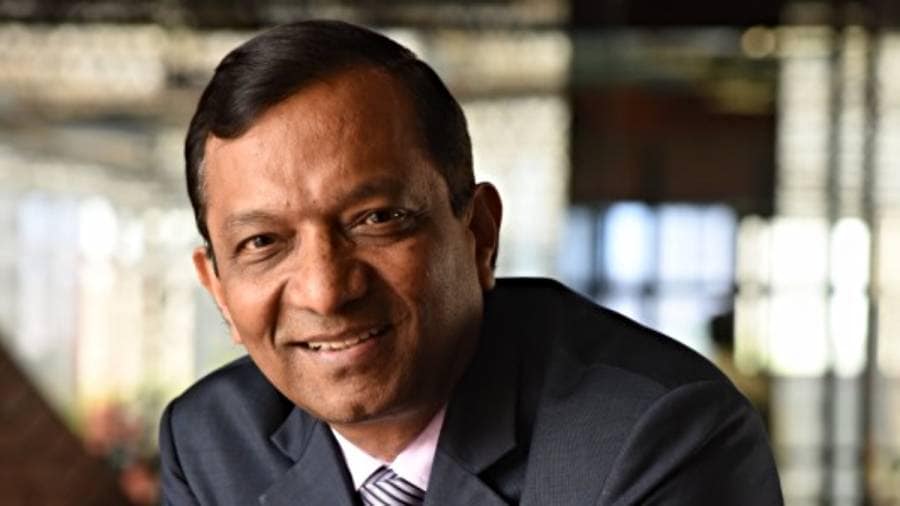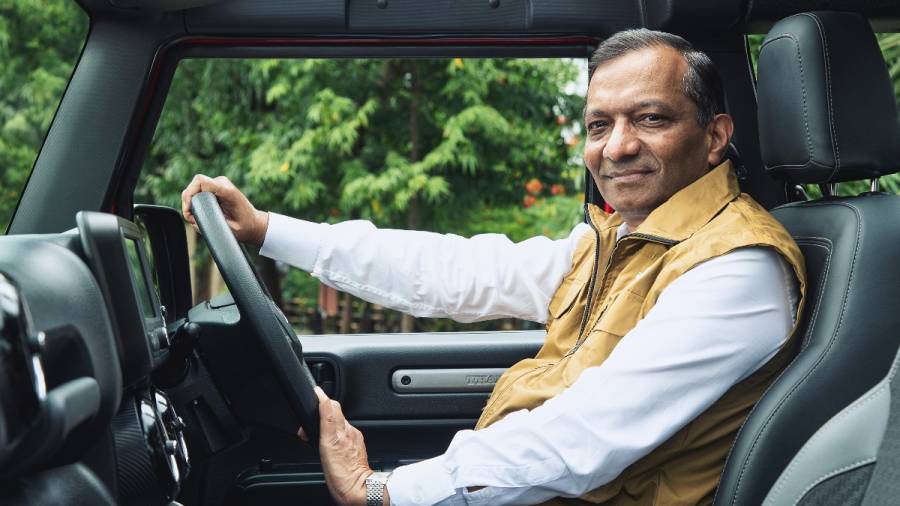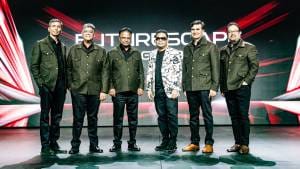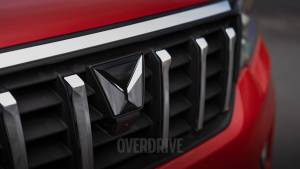Dr Pawan Goenka in conversation with Bob Rupani
Pawan Goenka, former MD & CEO M&M who recently retired after 42 years in the auto industry, in a freewheeling and friendly conversation with Bob Rupani.

You have had a long innings in the auto industry, both with General Motors, USA (1979-1993) and Mahindra & Mahindra (1993-2021). How has this 42 years journey been?
Two words - gratifying and fulfilling. I had three phases of my journey. First, 14 years at General Motors of basic R&D work in engine design and development. Second, 10 years at Mahindra of product development. And third, 18 years at Mahindra of business management as CEO. All three phases were distinctly different and gave me the satisfaction of achieving something. I will not trade a single day of this journey with anything else.
In your 28 years with Mahindra, it has gone from being an auto company with just one or two products, to having a whole range of different SUVs and UVs. Having led many of the launches are you happy with the achievements or would you have wanted to do more?
One can never be fully satisfied with what has been achieved. There is a lot we did and a lot more that could have and should have been done. Our early launches were all blockbusters and have stood the test of time. But some of our later launches were not as successful. The success of Thar is a big boost to Mahindra. Mahindra must and will win back the crown of "SUV King" on the back of our impending launches. Also, we could have had perhaps a larger share of vehicle exports from India.
If you were to pick one Mahindra product or project as your favourite, which one would it be and why?
I cannot be partial to any one product or project - with every launch, both in automotive and tractor space, we improved from the previous one. Having said that since Scorpio was the first big product development that we did, and since it was make or break for the company, if you force me to pick one, it will have to be that. If I look at projects other than products, I will have to vote for two. First, our drive for customer centricity that took us from near bottom to near top over a 14-year period. Second, the Chakan (near Pune) plant that is one of the largest and most state-of-the- art automotive plants in India. This plant will serve Mahindra for the next generation and more.

Mahindra has had several collaborations with other major manufacturers like Ford and Renault. But they have not lasted long and just recently the new joint venture with Ford Motor Company also got called off. What are the reasons for this?
Success of a collaboration is not just in how long it lasted but what were the gains from it for the two partners. We have talked about these collaborations at length in the past. For example, Ford collaboration was an outcome of choice between investing in Scorpio and the Ford JV. Renault was due to their decision to expand in India with their global partner Nissan. Navistar was because of the overall global slowdown for Navistar and their need to exit many of their overseas operations. The recent Ford JV was a victim of changing industry outlook due to Covid and Mahindra's need to double down on EVs.
In 2010, Mahindra acquired a controlling stake in Reva Electric Car Company. But despite this head start and early move, Mahindra still does not have a mainstream and modern EV vehicle. What's the reason for this?
Mahindra was early in the EV game and has made substantial investment in EV product, technology, and capacities. Today Mahindra has more R&D engineers in EVs than perhaps all OEMs combined. Mahindra has more 4-wheelers on the road than all others combined. Mahindra has experience of 270 million km of e-drive of its products. Mahindra has so far focused on shared mobility and last-mile connectivity vehicles and we have done well with our Verito and Treo products in this space. We are at the verge of launching the eKUV and will soon have Atom and S210. We have also announced our plan to double down our EV investment.
How do you see the transition in India from conventional cars to EVs? And realistically, by when do you expect the majority of vehicles sold to be EVs?
Two years ago, in an ACMA speech I had said that those who think EVs will not happen should think so at their own risk and those who think IC engine vehicles are dead, should also do so at their own risk. This statement is true even today. I think the rate of growth of EVs now will be very rapid - first in last mile connectivity vehicles and two-wheelers, then in buses and shared mobility 4-wheelers and finally in personal mobility vehicles. But this is from a very small base and IC engine vehicles will continue to dominate, at least in the personal vehicle space for at least a decade. No OEM, however, can afford to ignore EVs.
What according to you are the most significant changes that you have seen in the Indian auto industry? And do you wish we had done some things differently?
If I was to look back 25 years, I would say that there are three advancements that I am most proud of. First, the advancement of the supplier ecosystem in India. I remember how rudimentary the supplier base was when we were developing the Scorpio in Mahindra. Today, our suppliers - both homegrown as well as MNC offshoots - can rub shoulders with the best in the world. Second, the build-quality of our products. Quality defects have reduced by a staggering 90 per cent and now compare favourably with most advanced markets. Third, and perhaps the most important, is our ability to design, engineer and develop world class products completely in India. Today, every major carmaker has an engineering centre in India, and many have complete product development capability. The frugality in product development also gives India a competitive edge. As for doing things differently, I think Indian industries' global aspirations should have been higher both for vehicles as well as components.
Today where would you place Indian automobile manufacturers like Mahindra, Tata, and so on, in comparison to global majors like VW, Toyota, Hyundai, Honda etc?
I will obviously be biased and say that at least for the domestic market the Indian players are not at any disadvantage. Where Indian players are lacking is in global reach and overall scale. They make up for it by focussing on products aimed at emerging market consumers. There is no compromise in ability to develop products. Quality has by and large caught up; design capability has by and large caught up. Scale does constrain Indian players from making huge investments in emerging technologies such as hybrids and electrics but they are now beginning to, and will do it in a much more frugal manner.
What does the future hold for Pawan Goenka and what is it that you are looking forward to doing most now?
I intend to be professionally engaged but not be bound by timelines and deliverables. I would get most fulfillment if I am able to use my learning's from auto and tractor industries over the last 42 years in helping other industries in India via the medium of board level engagements, advisory assignments and working with the government in various capacities. Anything that I can do to promote R&D in India will also be a fulfilling outcome. I have planned to keep one third of time for my family, friends and for myself and will try hard not to intrude into that time bubble.














